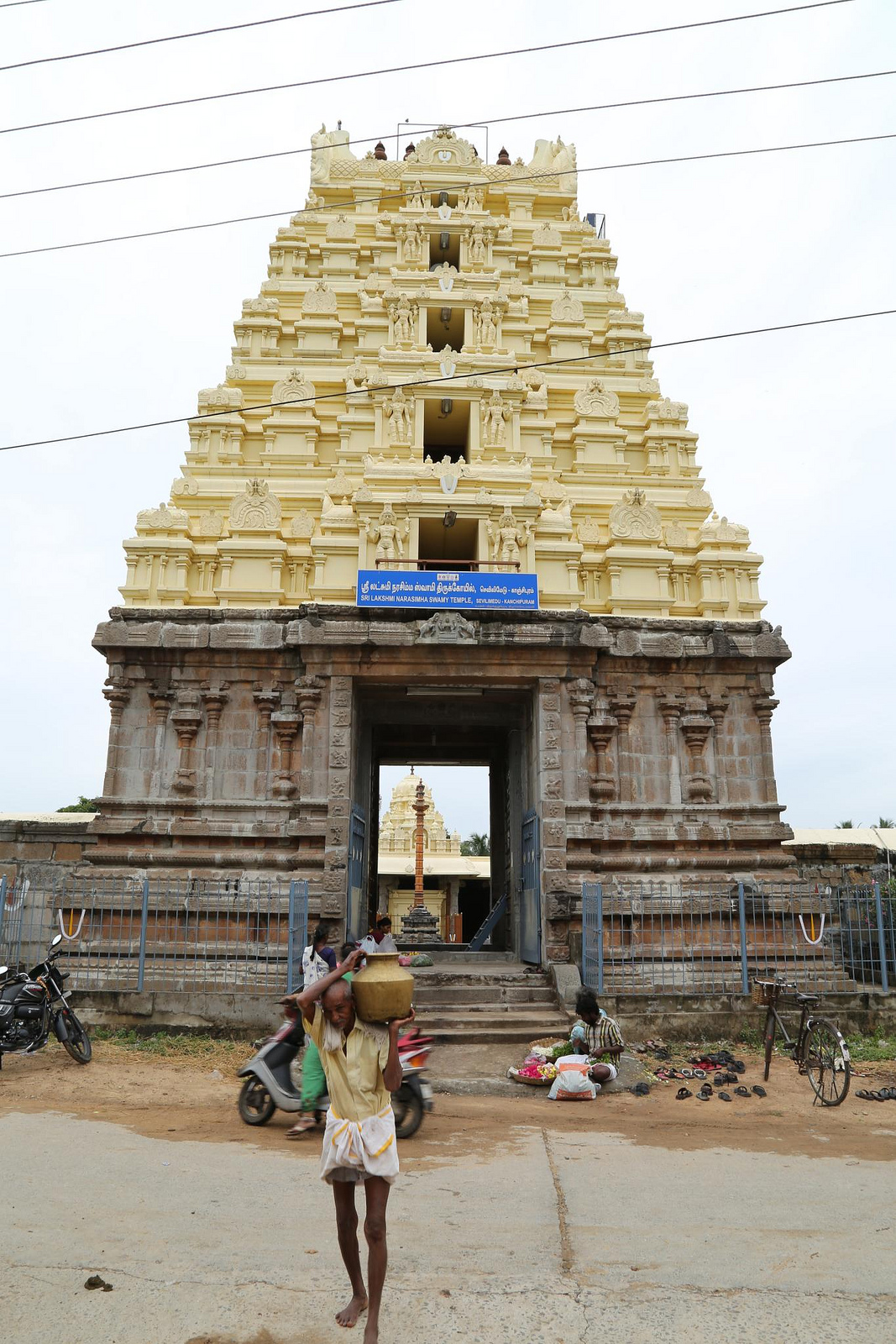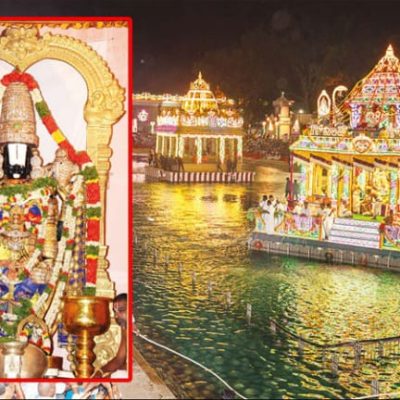Sevilimedu Lakshmi Narasimhaswamy Temple, Kanchipuram

Address
Sevilimedu Lakshmi Narasimhaswamy Temple, Sevilimedu, Kanchipuram District, Tamilnadu – 631502.
Deity
Lakshmi Narasimhaswamy Amman: Soundaravalli Thayar.
Introduction
The Lakshmi Narasimhaswamy Temple, dedicated to Lord Vishnu, is located in the picturesque village of Sevilimedu in the Kanchipuram District of Tamil Nadu. Situated just 2 km from Kanchipuram Town, the temple holds immense historical, cultural, and spiritual significance.
Historical and Puranic Significance
- Origin of Sevilimedu:
The village derives its name from two possibilities:- The presence of Sevilithai, a maidservant of a Pallava queen, who resided here.
- The abundance of Sevalli flowers that once bloomed in the village ponds.
- Temple History:
- The temple is believed to be 1,500 years old and boasts inscriptions indicating that Raja Parameswara Pallava performed the Samprokshanam (consecration).
- The Kanchi Varadaraja Perumal idol was safeguarded in this temple during the Mughal invasions for a year. A tunnel, still visible today, was used to transport the idol.
- The temple saw architectural expansion during the Vijayanagara period and features stunning sculptures from this era.
- Cultural Connections:
- The nearby Salakkinaru Well is linked to Sri Ramanuja, who used it to offer water to Sri Varadaraja Perumal.
- The Nadavavi Kinaru, another significant well from the Pallava period, contains a mandapam beneath the water, where devotees are blessed with a divine darshan of Sri Lakshmi Narasimha Swamy during Chitra Pournami.
Temple Architecture and Deities
- Main Deity:
- Sri Lakshmi Narasimha Swamy, in a seated posture, with Goddess Lakshmi on his left lap. The deity’s hands hold the conch and discus, symbolizing protection and reassurance for devotees.
- Unique Features:
- Utsava Murthy: Known as Sri Soundarya Varadar, renowned for his beauty.
- Thayar: Worshipped as Sri Soundaryavalli Thayar, with a shrine located to the right of the main sanctum.
- Mandapam: The large pillared halls, adorned with intricate carvings from the 15th–16th century Vijayanagara era, house shrines for Garuda, Sri Bhakta Anjaneya, and various revered saints such as Poigai Azhwar, Ramanuja, and Vedanta Desika.
- Recent Renovations:
- The temple underwent Maha Samprokshanam in 2011, and the Rajagopuram Samprokshanam was completed in 2008, restoring the temple’s grandeur.
Festivals and Rituals
The temple celebrates numerous festivals with grandeur, following the Vaikhanasa Agama tradition:
- Monthly Rituals:
- Special Thirumanjanam (Abhishekam) during every Swati Nakshatram for Sri Lakshmi Narasimha.
- Thai Fridays hold special significance for Thayar.
- Annual Festivals:
- Purattasi Brahmotsavam, Panguni Uthiram, Vaikasi Visakam, Vaikunda Ekadashi, Masi Makam, Thiru Karthikai, and Sravana Deepam.
- During Chitra Pournami, Sri Varadaraja Perumal visits the temple, goes around the village, and proceeds to Ayyangarkulam, a nearby historic village.
Special Features of the Temple
- Rajagopuram: The towering 65-foot structure welcomes devotees into the temple’s vast 2-acre complex.
- Garuda Shrine: The impressive stone image of Garuda in Anjali Hasta is a notable feature.
- Architectural Grandeur: The intricate sculptures, spacious mandapams, and sanctums reflect the temple’s historical and spiritual significance.
Century/Period/Age
1500 Years old
Managed By
Hindu Religious & Charitable Endowments Department (HRCE)
Nearest Bus Station
Sevilimedu
Nearest Railway Station
Kanchipuram
Nearest Airport
Chennai





